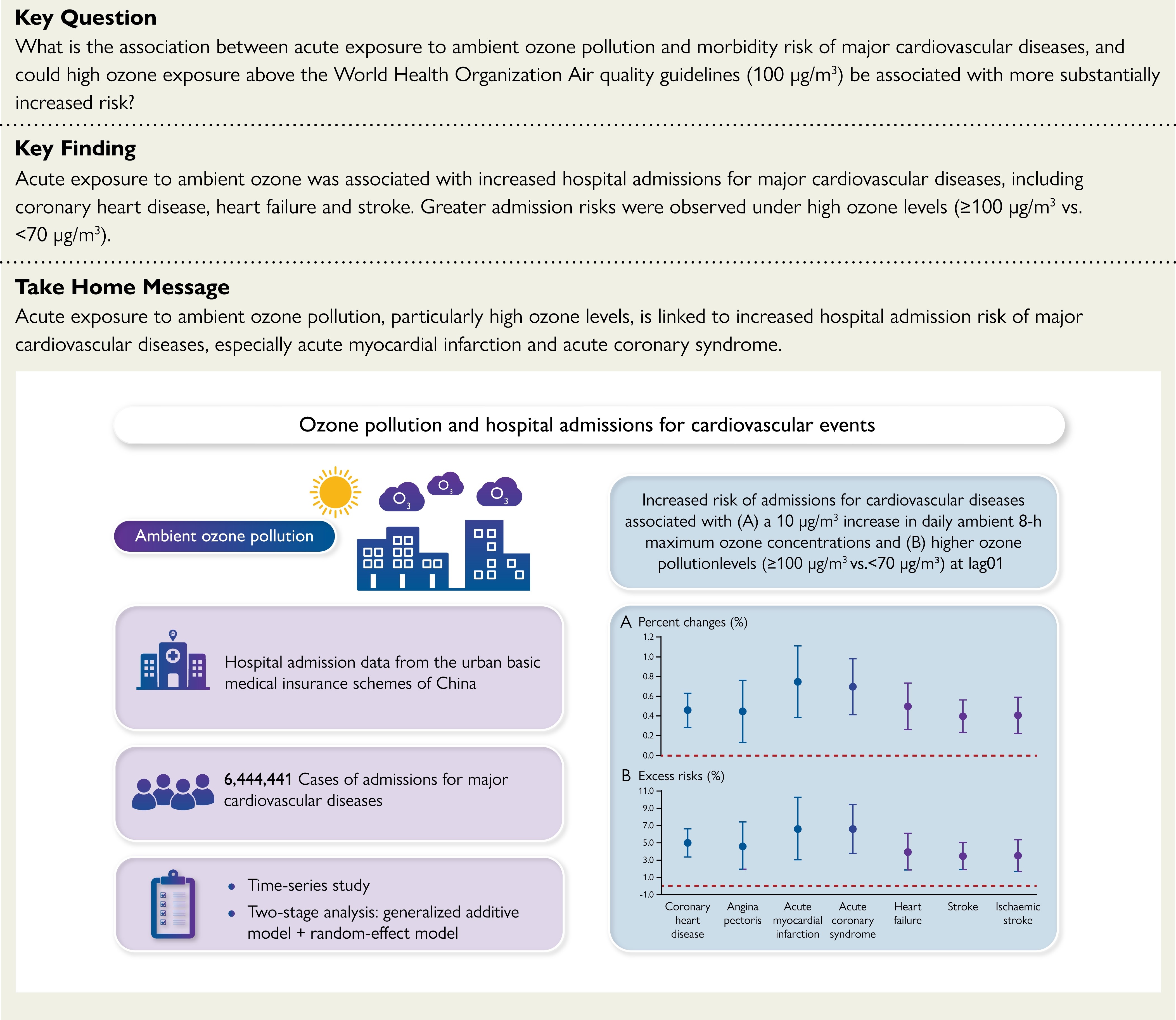The first evidence that exceeding the World Health Organization (WHO) ozone limit is linked to significant increases in hospital admissions for heart attacks, heart failure and stroke is published today in European Heart JournalJournal of the European Society of Cardiology (ESC). Even ozone levels below the WHO limit have been linked to poor health.
“During this three-year study, ozone was responsible for an increasing proportion of admissions for cardiovascular disease as time progressed,” said study author Shaoyi Wu of Xi’an Jiaotong University, China. “Climate change, by creating atmospheric conditions favorable to ozone formation, is believed to continue to increase concentrations in many parts of the world. Our findings indicate that the elderly are particularly vulnerable to the adverse cardiovascular effects of ozone, which means that ozone pollution has worsened with climate change and increased An aging world population may lead to a greater risk of cardiovascular disease in the future.”
Ozone is a gas and the main air pollutant in photochemical smog. Ozone pollution differs from the ozone layer, which absorbs most of the sun’s ultraviolet rays. Ozone pollution is formed when other pollutants react in the presence of sunlight. These other pollutants are volatile organic compounds and nitrogen oxides emitted from motor vehicles, power plants, industrial boilers, refineries, chemical plants, and facilities that burn biomass and fossil fuels. Previous studies have indicated that ozone pollution harms the heart and blood vessels, but there is limited and inconclusive evidence of its effect on cardiovascular disease risk.
This study examined the relationship between environmental ozone pollution and hospital admissions for cardiovascular disease. Data on daily hospital admissions for cardiovascular disease during the period 2015–2017 in 70 cities in China were collected from the two major national health insurance systems. During the study period, the two databases covered nearly 258 million people in 70 cities, which amounts to more than 18% of China’s population. Types of cardiovascular disease include coronary heart disease, stroke, and heart failure, as well as subtypes such as angina pectoris, acute myocardial infarction, acute coronary syndrome, stroke, and hemorrhagic stroke.
The eight-hour average maximum concentrations of ozone, fine particulate matter (PM2.5), respirable particulate matter (PM10), sulfur dioxide, nitrogen dioxide and carbon monoxide for each city were obtained from the National Real-time Publishing Platform. Urban air quality in China.
During the study period, there were 6,444,441 hospitalizations for cardiovascular diseases in 70 cities, and the average daily maximum ozone concentration for eight hours was 79.2 μg/m³. Exposure to ambient ozone was associated with increased hospitalizations for all cardiovascular diseases studied except hemorrhagic stroke, independent of other air pollutants. For example, each 10 μg/m3 increase in average 8-hour peak ozone concentration over 2 days was associated with a 0.40% increase in hospital admissions for stroke and 0.75% for acute heart attack.

“Unapologetic tv specialist. Hardcore zombie trailblazer. Infuriatingly humble problem solver.”

